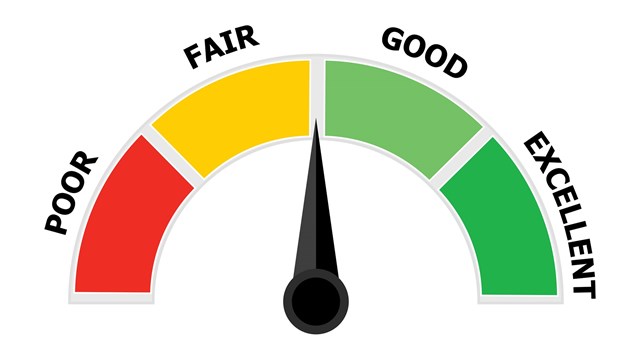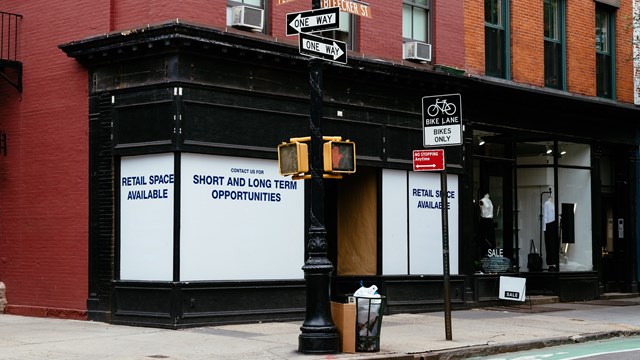It’s no secret that Chicagoans love their dogs. In 2011, DogFriendly.com ranked Chicago the second most dog-friendly city in the United States (Portland, Oregon, ranked number 1). The criteria was based on the number of lodgings, attractions, outdoor restaurants, stores and beaches that welcome dogs. According to city statistics, it's estimated that Chicago residents own nearly three-quarters of a million dogs.
If you're the proud owner of a noble hound, you know what an important part our canine counterparts play in both day-to-day and larger life decisions we make. Where to live? Why to live there? And with more and more, What’s in it for Fido? The easier a co-op or condo building can make it on dog owners to care for their pooches given the hectic pace of most Chicagoans, the more attractive the community. So the 20 off-leash dog runs located throughout the city may play a large role in the demographic of the surrounding buildings.
If You Build It… They Will Come
Chicago has leash laws which require dogs to be leashed at all times with the exception of designated areas. These areas have taken the form of dog runs.
The first urban dog run appeared in Chicago in 1997 in Lincoln Park. Wiggly Field was founded by animal lovers Stacey Hawk, Diane Dorwart and Judy Tullman. Its purpose was to give city dog-owners a place to bring their pets for some hard-to-come-by exercise space. The popularity of Wiggly Field grew enormously over the years; it has been featured on Animal Planet’s show K-9 to 5 and was recently named one of the top ten U.S. dog parks by the readers of Dog Fancy magazine. The popularity of the dog run inspired others to open throughout the city.
Space and surface are two key elements for a successful, popular dog run, says Douglas Freeman, president of the South Loop Dog Park Action Cooperative in downtown Chicago.
“Ideally you will have at least two acres for a dog run, which you are not going to get in downtown Chicago,” says Freeman. “The space has to be big enough for dogs to play catch and run and socialize with other dogs. Constraints of space are an issue, so we end up with very small dog parks—most of them are about half an acre. Another issue is that due to sanitary concerns by the Parks District it was decided that dog parks in Chicago had to have a hard surface. For example, 60 percent of the Grant Park dog park in the South Loop is asphalt and 40 percent pea gravel. A dog’s paw can deteriorate very rapidly on a surface like that—it’s just not a good surface for the dogs to play on. The Parks District was concerned with germs and bacteria in a soil or grass surface because grass surfaces turn to mud.”
A Dog's Life
Living in downtown Chicago with a dog can be tricky. Every time your pet pooch needs to go out, you have to take the elevator or stairs down and walk to the nearest green space, which can be quite a journey depending on your location. As a solution more and more housing communities have built on-site dog runs in order to make canines and their human counter parts lives easier. A sure-fire way to attract the dog-owning market-share is to develop properties near city green spaces that either already have, or have the potential to create dog friendly off-leash areas.
One community that has embraced the doggy life is Bold L&H lofts on West Washington Street in East Garfield Park. The condo's residents and their pets enjoy a green rooftop dog run, which also includes BBQ grills and private gardens.
“When I put in the rooftop dog run I was looking at several amenities that would differentiate myself, and it turns out the dog run was it,” says Larry Kerner, Bold L&H Lofts developer. “Finding a residence that welcomes dogs can be tough. There are 68 units in the building, and about 40 percent of our residents have dogs—most of them have two. I think the rooftop run was a factor in many of the residents’ decision when they decided to move in; maybe it was the clincher. People love their pets and don’t want to be separated from them.”
The Heritage at Millennium Park, the tallest residential building in the Loop, has also embraced the dog life. The 57-story building features a dog run, but there is a 2 pet limit and a weight limit of 35 pounds.
Designing for Dogs
Designing dog runs now necessitates consideration for the dog owners as well as the dog. In urban areas especially human socialization plays a large a role in a successful run. Relationships are inevitably forged when human-dog teams meet at the same time day after day, so it’s important for owners to be comfortable as they watch their dog frolic with his pals, not to mention the casual dog-free spectators.
Entering and exiting the area can be tricky with so many dogs clambering for attention and the general air of excitement. To ensure no one escapes many dog runs now have vestibule-type entrances. This is a double opening where one gate opens by either sliding or swinging out so that it may be closed before entering the area where the dogs are.
Rooftop dog runs might make some pet owners worry about their dogs’ safety, but L& H Lofts' facility features tall guardrails and additional layer of fencing between the dog run and the edge of the building.
“Next to the dog run we have a deck with café tables and chairs so the owners can sit and have a beverage while the dogs play,” says Kerner. “The actual dog run is 12 feet by 25 feet, so it’s on the small side but it’s been a big hit. We recently installed motion-sensor lights, so it’s well lit and creates safer conditions for the dogs and their owners.”
Kerner's building isn't the only one recognizing the attractiveness of in-house pup facilities. In the mixed-use developments River North and The Flair Tower, both at the EnV in downtown Chicago, each building has amenity decks that include dog runs. At the Flair Tower, the amenity deck also features a pool and hot tub—though those are strictly for human use.
Keep It Clean
Whether on a rooftop or on solid ground, keeping a dog run clean and well maintained is important to all who want to enjoy the park. Where possible, sheds or storage bins are helpful in the clean-up effort, allowing Something large enough for rakes, shovels, garbage bags and various hose attachments generally does the trick.
Most urban dog runs now offer at least one area where fresh drinking water is available, although some of the larger and more popular runs have a few spigot stations. These areas are there not only to help keep the dogs clean, cool and hydrated, but are an invaluable weapon in the maintenance arsenal of the park itself.
“One of our biggest challenges is that we can’t run water on the roof in the winter,” says Kerner. “If we run water in the winter it will freeze, so we’re looking into incorporating some sort of heating element, but that’s very expensive.”
Highest on the maintenance-concerns-scale is, of course, poop—and growing numbers of dog runs now offer bags to pick it up with. Staying on top of this type of clean-up is of the utmost importance in odor reduction, hygiene, and general park cleanliness. The most common reasons dog owners site for not picking up after their pet is not having anything to pick it up with, so offering free bags eliminates that excuse.
“For a while we didn’t provide plastic bags for the dog owners who forgot theirs and the poop became a big maintenance issue,” says Bonnie Olszewski, spokesperson for the Forest Preserve District of DuPage County, which operates several off-the-leash parks, “Now that we provide plastic bags, it’s not too much of an issue anymore. We also have staff that goes in once a week to take out the garbage and check in, but for the most part we rely a lot on the visitors who are using the off-the-leash facilities for maintenance.”
“A major maintenance challenge we face is keeping the dog run sanitary and getting the residents to pick up after their dogs,” adds Kerner. “Most of them do, but some of them don’t. We go through 10,000 bags a year. We also have to address odors. We’re looking at products that neutralize the smell of urine, for example. It’s not just a sanitary thing; we want to create a nice, fresh smell and a pleasant environment for both the dogs and their owners.”
At the end of the day, dog owners are drawn to these spaces so their pets can have their 15 minutes or hour or however long is right for them of off-leash time each day. It’s a very natural thing for dogs to want to run unfettered by a leash and be social. Dog runs are outlets for them to do just this in a safe, well monitored environment.
David Garry is a freelance writer and a frequent contributor to The Chicagoland Cooperator. Staff writer Christy Smith-Sloman contributed to this article.







Leave a Comment